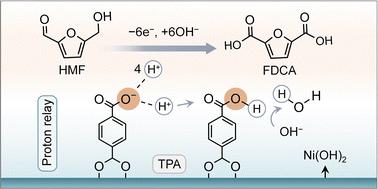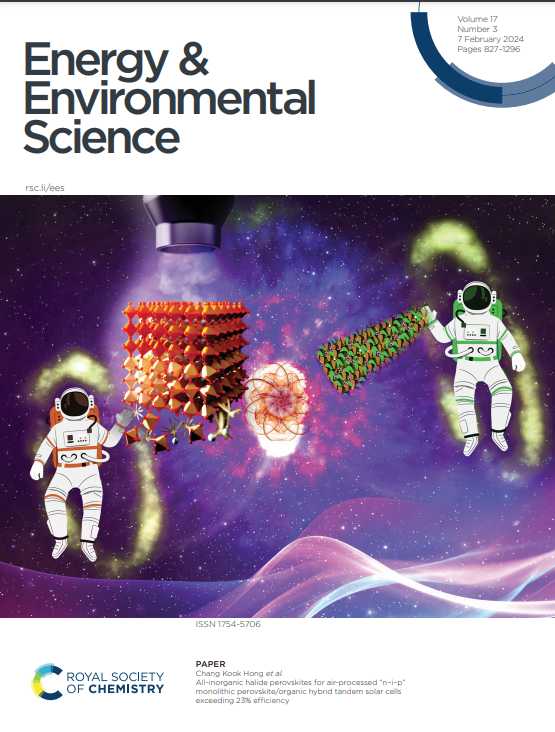Bio-inspired proton relay for promoting continuous 5-hydroxymethylfurfural electrooxidation in a flowing system
IF 32.4
1区 材料科学
Q1 CHEMISTRY, MULTIDISCIPLINARY
引用次数: 0
Abstract
Electrooxidation of 5-hydroxymethylfurfural (HMF) to produce the platform molecule 2,5-furandicarboxylic acid (FDCA) provides a promising approach for biomass upgrading and green hydrogen production. However, the slow reaction kinetics and poor stability of the anode catalyst hinder continuous FDCA production in flowing systems at industrial current densities (>200 mA cm−2). Herein, a ligand-modified catalyst, Ni(OH)2–TPA (TPA: terephthalic acid), is synthesized for efficient HMF oxidation, wherein the uncoordinated carboxylate functions as the proton relay center, significantly enhancing oxidation performances. The current density is increased 16-fold compared to that of pure Ni(OH)2, and the faradaic efficiency of FDCA reaches 96.9 ± 0.2% at even 1000 mA cm−2. Consequently, an anion exchange membrane electrolyzer (25 cm2) is constructed that shows a current of 10.3 A at 1.80 V. The system operates stably for over 240 hours at 7500 mA, producing hectogram-level FDCA continuously with an overall productivity of 2.85 kg m−2 h−1. These results offer insightful strategies for designing catalysts and fabricating electrolyzers for industrial applications.

求助全文
约1分钟内获得全文
求助全文
来源期刊

Energy & Environmental Science
化学-工程:化工
CiteScore
50.50
自引率
2.20%
发文量
349
审稿时长
2.2 months
期刊介绍:
Energy & Environmental Science, a peer-reviewed scientific journal, publishes original research and review articles covering interdisciplinary topics in the (bio)chemical and (bio)physical sciences, as well as chemical engineering disciplines. Published monthly by the Royal Society of Chemistry (RSC), a not-for-profit publisher, Energy & Environmental Science is recognized as a leading journal. It boasts an impressive impact factor of 8.500 as of 2009, ranking 8th among 140 journals in the category "Chemistry, Multidisciplinary," second among 71 journals in "Energy & Fuels," second among 128 journals in "Engineering, Chemical," and first among 181 scientific journals in "Environmental Sciences."
Energy & Environmental Science publishes various types of articles, including Research Papers (original scientific work), Review Articles, Perspectives, and Minireviews (feature review-type articles of broad interest), Communications (original scientific work of an urgent nature), Opinions (personal, often speculative viewpoints or hypotheses on current topics), and Analysis Articles (in-depth examination of energy-related issues).
 求助内容:
求助内容: 应助结果提醒方式:
应助结果提醒方式:


